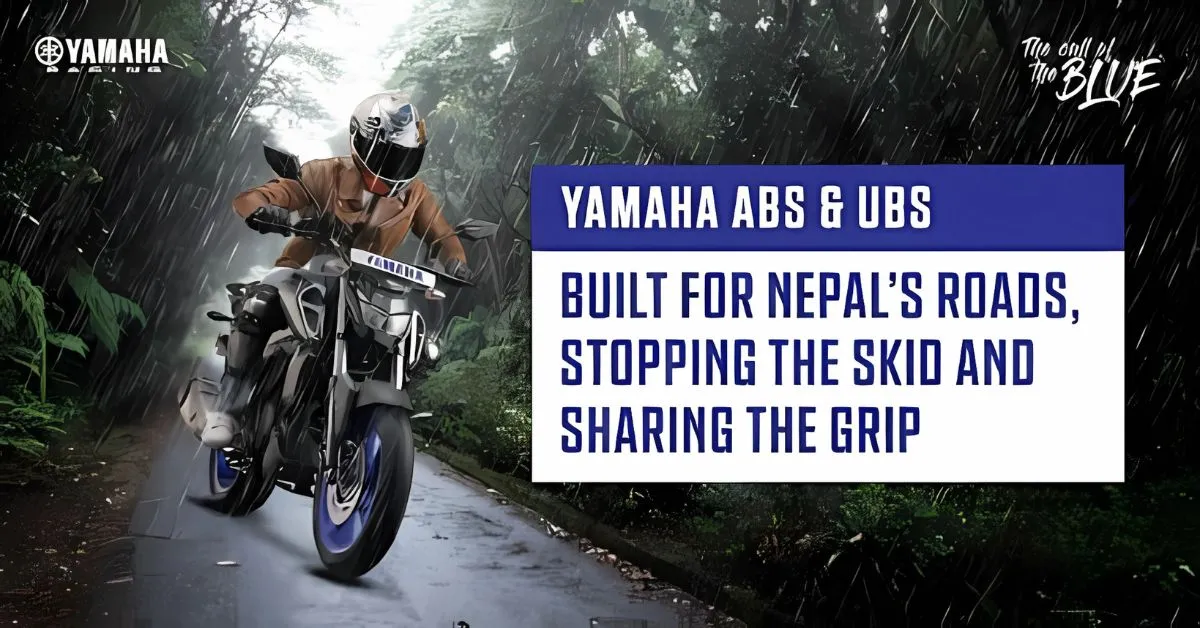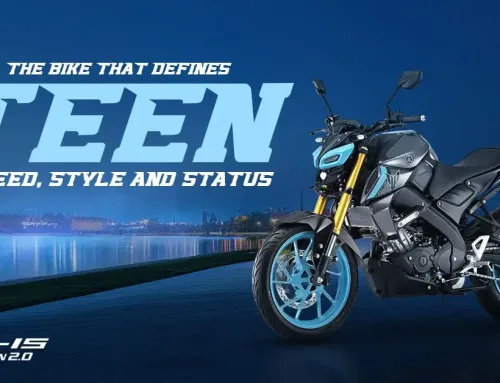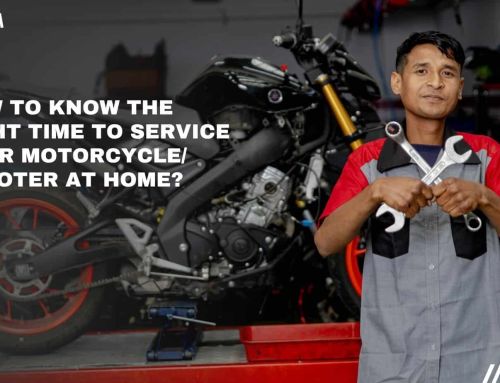
Most of the riders in Nepal have issues with slippery roads, especially in the monsoons. Riding motorcycles or scooters from reputable brands like Yamaha, the fact is that you already know how advanced features, like enhanced ABS and UBS, help improve your control. These systems prevent wheel lock-up and equalize the braking force, helping you maintain control and steer clear of accidents. With such features, you will be in an advantageous situation when riding on the country’s rugged and slippery roads.
- Understanding the Road Landscape of Nepal
- The role of braking in motorcycle safety
- Evolution of Motorcycle Braking Systems
- How Anti-Lock Braking Systems (ABS) Work
- Benefits of Anti-Lock Braking Systems
- Unified Braking Systems (UBS): Concepts & Advantage
- Installation and Maintenance of Braking Systems
- Final Words
Understanding the Road Landscape of Nepal
To realize why advanced ABS and combined braking systems are important, consider the particular nature of roads in Nepal. The hilly terrain, changing weather, and wet slippery roads provide demanding conditions for riders. With that kind of terrain in mind, consider how advanced braking systems improve your safety on roads, especially when driving on the difficult trails.
The role of braking in motorcycle safety
Many people overlook how critical their braking system is to their safety on Nepal’s slippery roads. Good braking allows you to react instantly to unexpected situations in front of you, keep control in adverse conditions, and prevent accidents. Giving precedence to your brakes can mean the difference between driving safely through slippery roads and experiencing a catastrophic accident.
🗸 Role of Effective Braking Systems
Your motorcycle brake performance directly impacts your ability to slow down in short order and maintain balance on slippery, winding roads. Advanced systems like ABS and Unified Braking distribute braking pressure equally to avoid wheel lock-up, retaining control for you. Quality components provide you with the confidence you need to safely ride Nepal’s rugged roads.
🗸 The Effects of Poor Brake Performance:
Poor braking at times reduces your braking efficiency and leads to skidding on slippery roads. The time-lag in response could turn small hazards into major accidents, risking your life as well as the lives of other users of the road. Impaired braking could lead to loss of control or accidents as well as injuries, especially on the low-traction Nepalese roads in the rain.
In fact, once your braking system fails, your control over the bike is lost, and your ability to make turns or evade objects is diminished. It can cause major overcorrection or loss of balance. Not only will your investment in advanced ABS or Unified Braking make your braking power superior, but your ride will also be stabilized, thereby markedly decreasing accident risks in difficult riding conditions.
🗸 Motorcycle accident statistics in Nepal
More than 70% of motorcycle accidents in Nepal are loss of control on slippery roads, which is commonly attributed to poor braking performance. These figures illustrate how braking contributes significantly to your ride’s safety. Knowing this empowers you to make informed choices on upgrading your motorcycle braking system for enhanced protection of yourself.
The incorporation of features like ABS has already demonstrated the capability of reducing accident rates markedly through facilitating braking in the event of an emergency. When purchasing motorcycles, do not miss checking their braking systems, as superior equipment can directly help reduce traffic fatalities and injuries on the rugged roads.
Evolution of Motorcycle Braking Systems
All brake systems are not the same on Nepali roads. You can observe how your motorcycle brake power evolved with innovation, following the survey of the performance of ABS in reducing the chances of an accident, in order to compare how such systems drastically decrease the crash threat. Your braking system, from early mechanical configurations of the first generation to completely integrated electronic control, has significantly evolved with much more control in unfavorable weather conditions.
Over the decades, safety features such as Anti-lock Braking Systems (ABS) and Unified Braking Systems (UBS) have evolved, greatly enhancing safety for riders. They enable you to maintain control of your steering when braking hard, greatly reducing the risk of skidding and accidents on Nepal’s slippery, gravelly, or icy roads.
ABS electronics and sensors have made traditional braking an adaptive as well as interactive system. During riding, the systems dynamically modulate the brake pressure for maximum grip as well as the prevention of wheel lock-up. Riding on the roads these days, you will find several motorcycles equipped with such systems, including the popular models offered from Yamaha Nepal, that balance performance as well as safety in difficult situations.
How Anti-Lock Braking Systems (ABS) Work
Anti-Lock Braking Systems (ABS) stop your skidding as they control brake pressure automatically to avoid your wheels locking. The feature helps you maintain control of your motorcycle when braking in a situation of emergency, contributing to your safety. For the safest motorcycles with stable ABS, check motorcycles from maw2wheelers.com.
🗸 Basics of ABS Technology
Before ABS came in, your wheels would lock up when braking hard, leading to loss of control. ABS monitors the wheel speed and rapidly modulates the brake pressure in order not to lock. ABS enables your motorcycle to slow down safely without hindering your control of the motorcycle, especially on slippery or icy roads common on Nepal’s mountain roads.
🗸 Components of an ABS:
A few of the components of an ABS include wheel speed sensors, hydraulic control unit, and an electronic control module. They all work together in sensing when a wheel is approaching lockup and regulating brake pressure appropriately, such that you can maintain traction on slippery roads. All of these components operate continuously in order to ensure safer braking on multiple types of road surfaces.
Yet, the performance of ABS is dependent on the coordination of these systems. The sensors must precisely monitor the rotational speed of all wheels because the control module translates in real-time so that the hydraulic unit can be given instructions. They are coordinated in real-time so that your motorcycle will react faster than human reflexes in the event of an impending impact.
🗸 The Mechanism of ABS in Preventing Wheel Lock
ABS performs its function by rapidly pulsing brake pressure to the wheels to avoid wheel lock. If one of the wheels is braking faster than the rest, the system momentarily releases pressure, then restores it, repeating the action several times per second.
The modulation allows you to maintain traction as well as control while braking on slippery surfaces. Its functionality is dependent on feedback cycles and precise timing. The system is constantly comparing wheel speed as well as controlling brake force in real time.
For your motorcycle, that translates to even in cases of emergencies like braking, your motorcycle can be steadied by the ABS, reducing the chances of skidding or loss of directional control, something extra useful on unpredictable roads.
Benefits of Anti-Lock Braking Systems
Now, while driving on Nepal’s hilly roads with slippery conditions, an Anti-Lock Braking System (ABS) makes sure that you are always in control as your wheels will not lock upon hard braking. The system makes you safer because you can steer even while braking hard, with fewer accident possibilities. With enhanced braking capability, ABS provides you with greater confidence as well as reduced braking distances as well, for safer travel on such slippery roads.
🗸 Enhancing Traction and Stability:
ABS provides the advantage of increased traction through brake pressure control, as well as avoiding wheel lock-up and maintaining your motorcycle stable on slippery surfaces. That way, you will always be balanced as well as in control when driving over slippery or uneven roads. Improved traction makes you respond in time in situations of emergencies as well as make turns safely, something that is downright imperative when driving over Nepal’s tricky terrain.
🗸 Prevention of Skid-Related Accidents:
90 percent of brake accidents on slippery or wet roads are caused by wheel lockup and skidding. ABS eliminates the chances of skidding considerably through auto-modulation of brake pressure, ensuring that you don’t lose control. This reduces the chances of accidents, especially on Nepal’s slippery roads in hilly areas, and makes your trip much safer.
Understanding how ABS inhibits skidding is an acknowledgment of the fact that normal braking causes wheels to stop rotating in hard braking, especially in slippery roads. It is wheel rotation loss that causes skidding as well as loss of steerability.
ABS pulsates rapidly when braking as an effort to keep wheels rotating, hence in addition to gaining steerability, also reducing chances of accidents on wet or gravelly roads common in Nepal.
Unified Braking Systems (UBS): Concepts & Advantage
The majority of riders in Nepal experience braking safety issues when riding on slippery roads. Unified Braking Systems (UBS) deliver superior control with coordinated braking power to front and rear wheels. This coordination helps in smoother braking, reduces the chances of skidding, and offers superior stability, hence a feature that needs to be included for safe riding on various roads.
Basically, Unified Braking Systems tie your front brake and rear brake of your motorcycle together such that when you squeeze one brake lever, both wheels receive equal braking. This makes control simpler for you as well as reduces the likelihood of imbalance, something that is important when riding on the unstable as well as predominantly slippery roads of Nepal.
🗸 Advantages of UBS over Conventional Systems:
You will feel increased braking stability, especially on rougher roads or when driving over wet pavement. UBS eliminates abrupt wheel lockup and provides smoother brake performance than individual brake systems, helping you avoid accidents and ride with increased confidence.
Unified braking technology optimizes brake distribution, controlling braking pressure in relation to conditions and rider inputs. This reduces the opportunity for over-braking of a wheel, leading to loss of traction. For those wishing to upgrade, UBS offers an identifiable safety advantage over a stock brake setup.
🗸 Integration of ABS with UBS:
Subsequently, the integration of ABS with the combination of UBS has made the braking systems even safer. With coordinated braking integrated with ABS wheel locking prevention, your motorcycle reaps the benefits of both balanced braking power as well as superior skid control.
A seamless integration of ABS and UBS gives you a dynamic braking response tailored to the conditions of the road for increased capability in braking hard while maintaining traction. Such an integration is useful in Nepal’s rainy roads, where control is of paramount importance.
Installation and Maintenance of Braking Systems
Keep your motorcycle’s braking system in its prime performance condition with correct installation and routine maintenance. Functional ABS and Unified Braking Systems (UBS) can be an excellent safety move on Nepal’s slippery roads, provided they are correctly installed and well-maintained. Engage original players like maw2wheelers.com, involved in the sale of Yamaha motorbikes and scooters, for quality installation and maintenance. This way, not only do you avoid breakdowns, but also maximize your motorcycle’s braking system.
🗸 Installation instructions for ABS and UBS:
ABS and UBS installation instructions require professional accuracy and assessment. It is recommended that you source certified technicians to install these systems for your motorcycle or scooter make and model. Proper calibration and testing must be motorcycled out to make sure ABS and UBS perform optimally under emergency braking conditions, which can considerably reduce the risks of accidents on Nepal’s slippery roads. Therefore, purchasing a good motorcycle with these inbuilt systems is a better idea.
🗸 Regular Maintenance Practices:
Apart from installation, routine maintenance is also needed in order for your ABS and UBS to function optimally. Monitor your brake pads, your fluid levels, as well as your sensors from time to time, and also follow your manufacturer’s maintenance schedule provided by your motorcycle dealer.
Routine servicing will ensure your braking mechanism is responsive as well as reliable, enhancing your safety on Nepal’s rugged roads.
Braking system service extends beyond regular checkups; it also includes taking note of subtle, gradual changes in the braking performance, like strange sounds or insensitiveness.
When you have concerns with your braking system, book a comprehensive inspection immediately. Proactive maintenance of your motorcycle or scooter brakes not only keeps your system as a whole in top condition but also ensures your safety when riding on slippery or wet roads.
🗸 Commonly Encountered Maintenance Issues:
With the rugged terrain of Nepal and uncertain weather conditions, brake system maintenance can have usual problems. Brake system failure, brake fluid contamination, or even damage from frequent rain or mud can be some of them. Knowing such problems encourages you to take care of them right away so that your ABS and UBS will always be in their prime.
Installing the right diagnostic equipment or seeking professional help from quality centers prepares you for identifying and fixing such problems in the right way. Preemptive diagnosis doesn’t let small issues turn major, and your braking system equips you with dependable performance that you will need the most on slippery roads.
Final Words
All in all, knowing something about how Unified Braking Systems and Better ABS function can actually make you safer on Nepal’s slippery roads. Both of these features enhance brake control along with stability, thus preventing you from getting into accidents during difficult driving situations.
For your next scooter or motorcycle purchase, go for models from reputable providers like maw2wheelers.com, the official distributor of Yamaha motorcycles and scooters in Nepal, to ensure you get advanced safety features in your machine. With an investment in a motorcycle engineered for safe braking, you can ride with confidence on wet as well as bumpy roads, promoting your safety along with other road users.
Table of Contents
- Understanding the Road Landscape of Nepal
- The role of braking in motorcycle safety
- Evolution of Motorcycle Braking Systems
- How Anti-Lock Braking Systems (ABS) Work
- Benefits of Anti-Lock Braking Systems
- Unified Braking Systems (UBS): Concepts & Advantage
- Installation and Maintenance of Braking Systems
- Final Words




